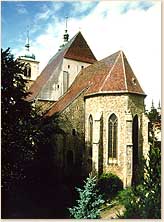 |
Back to main page
Want more info? Try Jihlava.cz

Town Square 
Holy Mother's Gate 
St. Jacob the Greater
Church |
|
|
 |
 |


